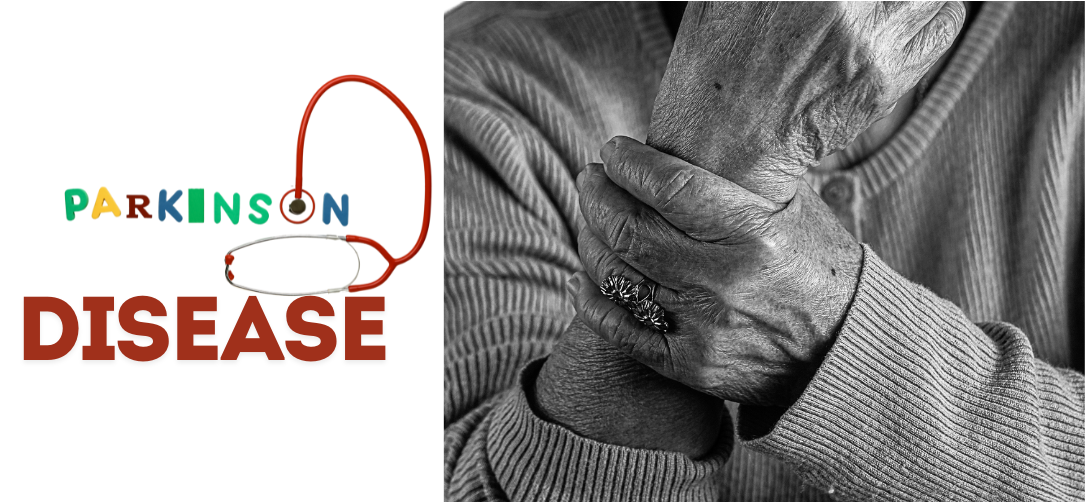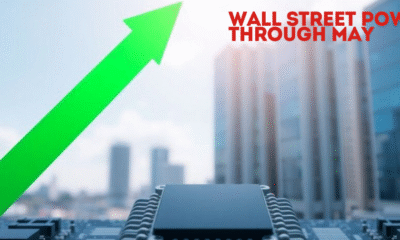Public Safety
Parkinson’s Disease: Understanding the Symptoms and Treatment Options

Parkinson’s disease (PD) is a progressive neurodegenerative disorder that affects millions of people worldwide. Named after the English physician James Parkinson, who first described it in 1817 as a “shaking palsy,” the disease primarily affects movement but also has far-reaching implications on cognition, mood, and overall health. Its exact cause remains elusive, though scientists have made significant strides in understanding its underlying mechanisms and treatment options.
With its profound impact on individuals and families, Parkinson’s disease is more than just a medical condition. It is a complex, multifaceted disease that challenges patients, caregivers, and healthcare professionals. To fully appreciate its nature, it is crucial to delve deep into its history, the underlying mechanisms of the disease, the various symptoms that patients experience, and the diverse treatment options available.
The Pathophysiology of Parkinson’s Disease
Parkinson’s disease is primarily characterized by the degeneration of dopaminergic neurons in a region of the brain known as the substantia nigra. Dopamine is a neurotransmitter that plays a key role in controlling movement, mood, and certain cognitive functions. In patients with Parkinson’s, as these dopamine-producing cells deteriorate, the brain’s ability to regulate movement diminishes, leading to the classic motor symptoms associated with the disease.
However, the exact cause of this neuronal degeneration is not fully understood. Several factors have been implicated in the development of Parkinson’s disease:
Genetic Factors: Approximately 10-15% of Parkinson’s cases are familial, meaning they are passed down from one generation to the next. Mutations in specific genes such as LRRK2, PARK7, PINK1, and SNCA have been linked to these familial cases. While genetic factors play a role, they are only one piece of the puzzle, and most cases of Parkinson’s disease are classified as sporadic, with no clear hereditary component.
Environmental Factors: Exposure to environmental toxins has also been associated with an increased risk of Parkinson’s. Pesticides, heavy metals, and certain industrial chemicals have been shown to induce Parkinson-like symptoms in animal models. Studies have found correlations between exposure to these toxins and the development of the disease in humans, though causality is difficult to establish. One of the most well-known examples is the association between the pesticide paraquat and Parkinson’s.
Lewy Bodies: In addition to the loss of dopaminergic neurons, one of the pathological hallmarks of Parkinson’s disease is the presence of Lewy bodies in the brain. These are abnormal aggregates of a protein called alpha-synuclein. While the exact role of Lewy bodies in Parkinson’s disease remains uncertain, their presence is thought to contribute to the dysfunction and death of neurons.
Mitochondrial Dysfunction: Mitochondria are the energy-producing structures within cells. In Parkinson’s disease, there is evidence that mitochondrial function is impaired, leading to increased oxidative stress and neuronal damage. This mitochondrial dysfunction is particularly pronounced in the dopaminergic neurons of the substantia nigra, further contributing to their degeneration.
The Symptoms of Parkinson’s Disease
Parkinson’s disease is often described in terms of its motor and non-motor symptoms. The motor symptoms are the most recognizable and are typically what lead to a diagnosis. However, the non-motor symptoms can be just as debilitating and often manifest long before the motor symptoms appear.
Motor Symptoms
Tremor: One of the most well-known symptoms of Parkinson’s disease is tremor, specifically a “resting tremor.” This tremor typically starts in one hand and may spread to other parts of the body as the disease progresses. It is called a resting tremor because it tends to occur when the affected limb is at rest and subsides with voluntary movement.
Bradykinesia: Bradykinesia, or slowness of movement, is another cardinal symptom of Parkinson’s disease. Patients often report that everyday tasks, such as buttoning a shirt or brushing teeth, become increasingly difficult and time-consuming. Bradykinesia is also characterized by a reduction in the amplitude of movements, leading to smaller and less precise motions over time.
Rigidity: Muscular rigidity, or stiffness, is a common symptom that can affect any part of the body. Unlike the spasticity seen in other neurological disorders, the rigidity in Parkinson’s is uniform, meaning it affects muscles in both directions of movement. This can lead to a “cogwheel” phenomenon, where the limbs move in a jerky, ratchet-like fashion when manipulated by a doctor during an exam.
Postural Instability: As the disease progresses, many patients develop postural instability, making them prone to falls. This instability is often accompanied by a stooped posture, which can further increase the risk of falling. Patients may also experience difficulty with balance and coordination, particularly when turning or changing direction.
Non-Motor Symptoms
While the motor symptoms of Parkinson’s disease are often the most visible, the non-motor symptoms can be equally disruptive and often appear earlier in the course of the disease.
Cognitive Decline: Many patients with Parkinson’s disease experience cognitive decline, particularly in the later stages of the disease. This can manifest as difficulty with attention, executive function (planning and organizing), and memory. In some cases, this cognitive decline can progress to dementia, particularly in patients with advanced disease.
Mood Disorders: Depression and anxiety are common in patients with Parkinson’s disease, affecting up to 50% of patients. These mood disorders are thought to be related to both the underlying neurodegenerative process and the psychosocial stress of living with a chronic illness.
Sleep Disturbances: Patients with Parkinson’s often experience a variety of sleep disturbances, including insomnia, restless legs syndrome, and REM sleep behavior disorder (RBD). RBD is particularly noteworthy because it often precedes the onset of motor symptoms by several years. In RBD, patients act out their dreams, sometimes violently, due to a loss of the normal paralysis that occurs during REM sleep.
Autonomic Dysfunction: The autonomic nervous system, which controls involuntary bodily functions such as heart rate, digestion, and blood pressure, is often affected in Parkinson’s disease. This can lead to a range of symptoms, including constipation, orthostatic hypotension (a drop in blood pressure when standing), urinary incontinence, and sexual dysfunction.
Olfactory Dysfunction: Loss of the sense of smell, or hyposmia, is a common early symptom of Parkinson’s disease, sometimes appearing decades before the onset of motor symptoms. Although not specific to Parkinson’s, olfactory dysfunction is present in up to 90% of patients and can be an early clue in the diagnostic process.
Diagnosis of Parkinson’s Disease
There is no single test that can definitively diagnose Parkinson’s disease. Instead, the diagnosis is primarily based on a clinical evaluation of the patient’s symptoms, medical history, and physical examination. In particular, doctors look for the presence of at least two of the four cardinal motor symptoms (tremor, bradykinesia, rigidity, and postural instability).
In some cases, doctors may order additional tests to rule out other conditions that can mimic Parkinson’s, such as essential tremor, multiple system atrophy, or progressive supranuclear palsy. Neuroimaging techniques such as MRI or PET scans can sometimes help in this regard, although they are not routinely used in the diagnosis of Parkinson’s.
One specialized imaging technique, known as dopamine transporter (DaT) imaging, can be used to assess the integrity of the dopaminergic system in the brain. This test is particularly useful in distinguishing Parkinson’s disease from other movement disorders that do not involve a loss of dopamine-producing neurons.
Treatment Options for Parkinson’s Disease
While there is currently no cure for Parkinson’s disease, a variety of treatments are available to help manage the symptoms and improve the quality of life for patients. These treatments can be broadly categorized into pharmacological therapies, surgical interventions, and non-pharmacological approaches such as physical therapy and lifestyle modifications.
Pharmacological Therapies
Levodopa: Levodopa is the most effective medication for treating the motor symptoms of Parkinson’s disease. It works by replenishing dopamine levels in the brain. Since dopamine itself cannot cross the blood-brain barrier, levodopa is administered as a precursor that is converted into dopamine once it reaches the brain. Levodopa is often combined with carbidopa, which prevents the premature breakdown of levodopa in the bloodstream, allowing more of the drug to reach the brain.
While levodopa can significantly improve motor function, its long-term use is associated with several complications, including motor fluctuations (where the medication’s effect wears off before the next dose) and dyskinesias (involuntary, abnormal movements).
Dopamine Agonists: Dopamine agonists are another class of medications used to treat Parkinson’s disease. Unlike levodopa, which is converted into dopamine, dopamine agonists mimic the effects of dopamine by directly stimulating dopamine receptors in the brain. While less potent than levodopa, dopamine agonists have a longer duration of action and are less likely to cause dyskinesias. However, they can be associated with side effects such as drowsiness, hallucinations, and impulsive behaviors.
MAO-B Inhibitors: Monoamine oxidase-B (MAO-B) inhibitors, such as selegiline and rasagiline, work by blocking the enzyme that breaks down dopamine in the brain, thereby prolonging its action. These medications are typically used in the early stages of Parkinson’s disease or as an adjunct to levodopa in later stages.
COMT Inhibitors: Catechol-O-methyltransferase (COMT) inhibitors, such as entacapone and tolcapone, help to prolong the effects of levodopa by inhibiting the enzyme that breaks it down. These medications are often used in combination with levodopa to reduce motor fluctuations.
Anticholinergics: Anticholinergic medications, such as trihexyphenidyl and benztropine, are sometimes used to treat tremor in Parkinson’s disease, particularly in younger patients. However, their use is limited by side effects such as dry mouth, constipation, and confusion, particularly in older patients.
Surgical Interventions
Deep Brain Stimulation (DBS): Deep brain stimulation (DBS) is a surgical treatment for Parkinson’s disease that involves the implantation of electrodes into specific areas of the brain, such as the subthalamic nucleus or the globus pallidus. These electrodes are connected to a pulse generator implanted under the skin, which delivers electrical impulses to the brain to help modulate abnormal neural activity.
DBS is typically reserved for patients with advanced Parkinson’s disease who have not responded adequately to medication or who experience severe motor fluctuations or dyskinesias. While DBS can significantly improve motor symptoms, it is not a cure and does not halt the progression of the disease. Moreover, it is not effective for non-motor symptoms such as cognitive decline or mood disorders.
Non-Pharmacological Approaches
1) Physical Therapy: Physical therapy plays a crucial role in the management of Parkinson’s disease, particularly in maintaining mobility and preventing falls. Exercises that focus on balance, coordination, and flexibility can help improve motor function and reduce the risk of injury.
2) Occupational Therapy: Occupational therapy helps patients with Parkinson’s disease maintain their independence by teaching them strategies to perform everyday tasks more easily. This may involve the use of adaptive equipment or modifications to the home environment.
3) Speech Therapy: Many patients with Parkinson’s disease experience speech difficulties, such as a soft voice (hypophonia) or difficulty articulating words. Speech therapy can help improve these communication problems and may also address swallowing difficulties, which can occur in the later stages of the disease.
4) Diet and Exercise: A healthy diet and regular exercise can have a positive impact on the overall well-being of patients with Parkinson’s disease. Exercise, in particular, has been shown to improve motor function, balance, and mood. Activities such as walking, swimming, yoga, and tai chi can be especially beneficial.
Research and Future Directions
While there is currently no cure for Parkinson’s disease, ongoing research offers hope for new and improved treatments. Some of the most promising areas of research include:
Gene Therapy: Gene therapy involves the introduction of genetic material into the brain to correct or replace defective genes associated with Parkinson’s disease. Early clinical trials of gene therapy have shown promise, particularly in restoring dopamine production or protecting neurons from degeneration.
Stem Cell Therapy: Stem cell therapy aims to replace the damaged or lost dopaminergic neurons in Parkinson’s disease by transplanting stem cells into the brain. While still in the experimental stage, this approach has the potential to restore normal dopamine function and slow the progression of the disease.
Neuroprotective Treatments: Researchers are actively investigating treatments that can slow or halt the progression of Parkinson’s disease by protecting neurons from further degeneration. These neuroprotective therapies, if successful, could fundamentally change the way Parkinson’s is treated, shifting the focus from managing symptoms to preventing the disease from worsening.
Conclusion
Parkinson’s disease is a complex and challenging disorder that affects millions of people worldwide. While significant progress has been made in understanding its underlying mechanisms and developing treatments to manage its symptoms, much work remains to be done to find a cure. Advances in pharmacological therapies, surgical interventions, and non-pharmacological approaches have significantly improved the quality of life for patients with Parkinson’s disease, but the search for a cure continues.
As research into the genetic, environmental, and molecular causes of Parkinson’s disease advances, there is hope that new treatments will emerge that not only alleviate symptoms but also slow or stop the progression of the disease. In the meantime, a multidisciplinary approach that includes medication, physical therapy, occupational therapy, and lifestyle modifications remains the best strategy for managing this debilitating condition.
-

 Business6 days ago
Business6 days agoS&P 500 Soars in Best May in Decades Amid Tariff Relief and Nvidia’s Surge
-

 Immigration6 days ago
Immigration6 days agoTrump’s Immigration Crackdown: Legal Battles and Policy Shifts
-

 Business6 days ago
Business6 days agoUS Stock Market Soars in May Amidst Tariff Tensions and Inflation Worries
-

 Government6 days ago
Government6 days agoTrump Administration’s Government Reshaping Efforts Face Criticism and Legal Battles
-

 Business6 days ago
Business6 days agoTrump’s Tariffs: A Global Economic Reckoning
-

 Foreign Policy4 days ago
Foreign Policy4 days agoInside Schedule F: Will Trump’s Federal Workforce Shake-Up Undermine Democracy?
-

 Press Release3 days ago
Press Release3 days agoIn2space Launches Campaign to Make Space Travel Accessible for All






























